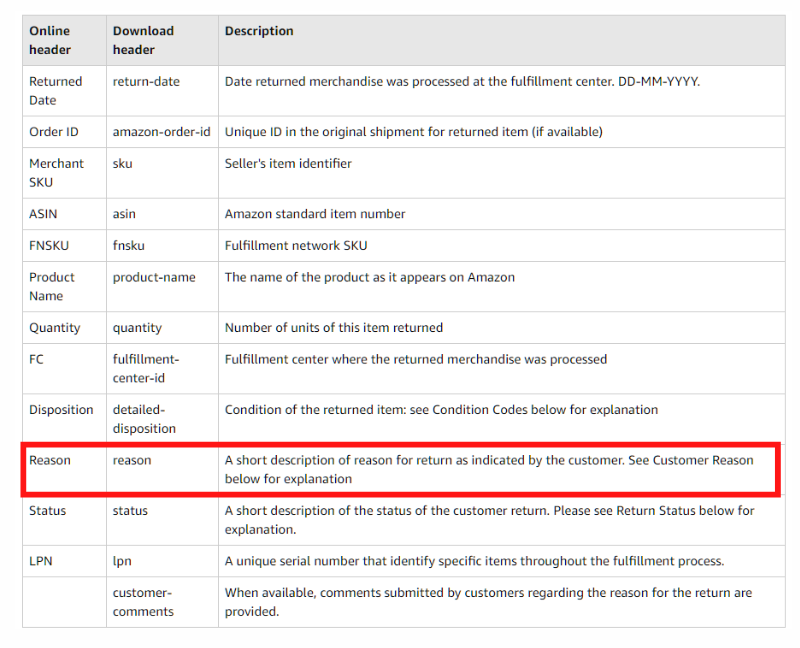AI Amazon Repricer
Boost your Amazon profits and avoid price wars with AI repricing
Your first month for only $1 when you subscribe before 2026. Ts&Cs apply.
Your first month for only $1 when you subscribe before 2026. Ts&Cs apply.
Amazon is widely recognized as a customer-centric company.

Amazon is widely recognized as a customer-centric company. In fact, it is known to have the best product returns scheme in the eCommerce industry, attributed to its returns policy. At all times, the eCommerce giant ensures that all customers are satisfied and pleased with its products and services. However, despite the quality of service that Amazon delivers, there are still some dissatisfied online shoppers who return their items after purchase. Such a situation is not exclusive to Amazon alone. Recent data shows that at least 30% of online orders are returned by shoppers, whether on Amazon or other eCommerce sites. Amazon returns are but a typical scenario in online selling.
Amazon returns is a solution offered by Amazon to their valued customers. It is a platform for Amazon shoppers to either exchange or return purchased items that they deem to have legitimate concerns, either regarding quality or quantity.
Following Amazon’s very own definition, a return happens when a customer sends an item back to a fulfillment center. A customer may request to return an item within 30 days upon receipt. However, such a return time frame is not absolute, for Amazon may offer extensions on a case-by-case basis. Some of the common reasons for these Amazon returns include items that are not working properly, items arriving late, availability of better listing price, and other reasons deemed by Amazon that are acceptable, including the ones shown below.

Amazon.com: A screenshot (cropped of) Amazon Returns Support Page, Retrieved April 15 2021, From https://amzn.to/3sfjWjH
Amazon sellers who have not yet experienced dealing with Amazon returns are likely concerned about the return process aftermath. According to Amazon, if the evaluation of the Amazon team suggests that the item is still sellable, it will go back into the seller’s inventory.
On the other hand, if the returned item is considered (1) defective, damaged, opened, lacking required labeling, or prohibited, (2) not in the same condition as previously listed, or (3) could pose health and safety risks to the next customers and Amazon associates, it is deemed unsellable.
Some of the items that are not returned into the seller’s inventory or fulfillment centers often end up being sold on the surplus marketplace, such as Liquidation.com and Secondipity.com.
In any form of business, record-keeping is essential. That is why you should keep all records and email notifications concerning Amazon returns and other Amazon-related correspondence. These records help check and verify the refund that Amazon has issued to your customer, especially for automatic refund under Amazon Prime. Additionally, the record will also help you determine whether the actual product return happened within the 45-day limit.
After Amazon returns have been initiated, it would be best to check your account for feedback. Usually, after a buyer requests a refund, they leave feedback for sellers. Regardless of the feedback, negative or positive, it is always good to contact the buyer and send a personal message concerning the buyer’s experience. In some instances, a simple email could easily deter a buyer from leaving a negative comment or even consider removing the negative feedback if it was already posted before your email.
Since Amazon staff are dealing with numerous inventory, it cannot be helped that some defects or damages might be overlooked when inspecting Amazon returns. Hence, potentially sending a damaged or defective item back to your inventory again. For that matter, it is recommended to have all returns sent back to you directly so that you can inspect them for any unscrutinized damages or defects. When dealing with multiple FBA returns, it would be best to have a team to help you check for potential overlooked defects.
To mitigate returns, you should dive deep into the reason for product returns. Apart from checking the customer feedback or contacting the shopper, you can also check the FBA customer returns report.
Please see the image below on how to navigate Reports via Seller Central.

Amazon Seller Central: A screenshot (cropped of) FBA Customer Returns Report Page, Retrieved April 15, 2021, From https://amzn.to/3tn6St
This will give you an idea about the returned product and the reason behind it. The data you might expect from the FBA customer returns report is as follows –

Amazon Seller Central: A screenshot (cropped of) FBA Customer Returns Report (Overview) Page, Retrieved April 15, 2021, From https://amzn.to/32hmfYU
With the help of the FBA customer report and the feedback left by the customer, you can try to re-optimize your listing for better results. In case of items being returned due to incorrect descriptions, try to edit your listing description accordingly. When pricing is the reason for returns, using an AI Amazon repricer would help attain price competitiveness and win more Buy Box.
Although Amazon has set predefined reasons for returns, there are other dubious reasons why shoppers return the items. While largely prevalent in brick-and-mortar stores, increasing online return fraud incidents should likewise be a concern for sellers.
Returns fraud takes several forms; below are the two of the most common types of returns fraud that occur not just on Amazon but also on other platforms.
This form of retail fraud involves customers who buy items with the pre-conceived thought of using the item only once and returning it for the full value.
Wardrobing does not only apply to clothing items but to almost all consumer items listed online. The culprit may intentionally order a special centerpiece for a fancy event and return it afterward with a bogus claim to get a full refund and free return shipping.
This type of returns fraud is easy to comprehend. Such deceit involves a culprit purchasing a product online using a stolen or fraudulent card. Once the online seller dutifully ships the goods, the culprit will return the item for a cash return retrievable from a physical store or via digital means.
As previously stated, product returns are a common occurrence in the eCommerce industry. However, this should not discourage you from improving your products and services. With the tips mentioned above and the use of reliable Amazon seller tools, you can decrease Amazon returns while increasing your profitability in the process.

Set up in minutes with the help of our customer success team, or reach out to our sales team for any questions. Start your 15-day free trial—no credit card needed!